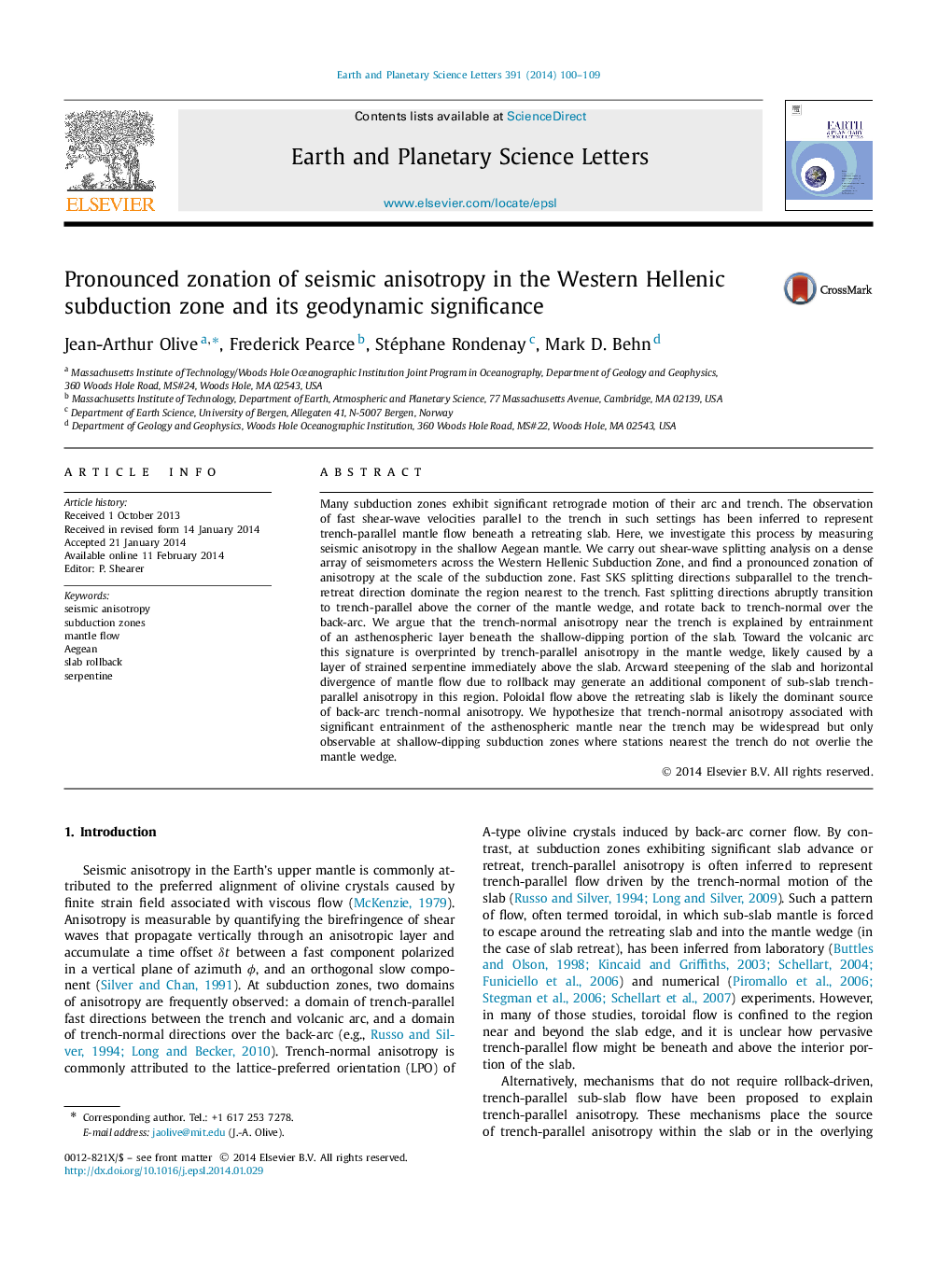| Article ID | Journal | Published Year | Pages | File Type |
|---|---|---|---|---|
| 6429432 | Earth and Planetary Science Letters | 2014 | 10 Pages |
â¢The Hellenic subduction features a pronounced zonation of seismic anisotropy.â¢Trench-parallel anisotropy is best explained by a supra-slab layer of serpentine.â¢Trench-normal anisotropy is best explained by slab rollback-induced mantle flow.â¢Results suggest strong slab-asthenosphere coupling.
Many subduction zones exhibit significant retrograde motion of their arc and trench. The observation of fast shear-wave velocities parallel to the trench in such settings has been inferred to represent trench-parallel mantle flow beneath a retreating slab. Here, we investigate this process by measuring seismic anisotropy in the shallow Aegean mantle. We carry out shear-wave splitting analysis on a dense array of seismometers across the Western Hellenic Subduction Zone, and find a pronounced zonation of anisotropy at the scale of the subduction zone. Fast SKS splitting directions subparallel to the trench-retreat direction dominate the region nearest to the trench. Fast splitting directions abruptly transition to trench-parallel above the corner of the mantle wedge, and rotate back to trench-normal over the back-arc. We argue that the trench-normal anisotropy near the trench is explained by entrainment of an asthenospheric layer beneath the shallow-dipping portion of the slab. Toward the volcanic arc this signature is overprinted by trench-parallel anisotropy in the mantle wedge, likely caused by a layer of strained serpentine immediately above the slab. Arcward steepening of the slab and horizontal divergence of mantle flow due to rollback may generate an additional component of sub-slab trench-parallel anisotropy in this region. Poloidal flow above the retreating slab is likely the dominant source of back-arc trench-normal anisotropy. We hypothesize that trench-normal anisotropy associated with significant entrainment of the asthenospheric mantle near the trench may be widespread but only observable at shallow-dipping subduction zones where stations nearest the trench do not overlie the mantle wedge.
